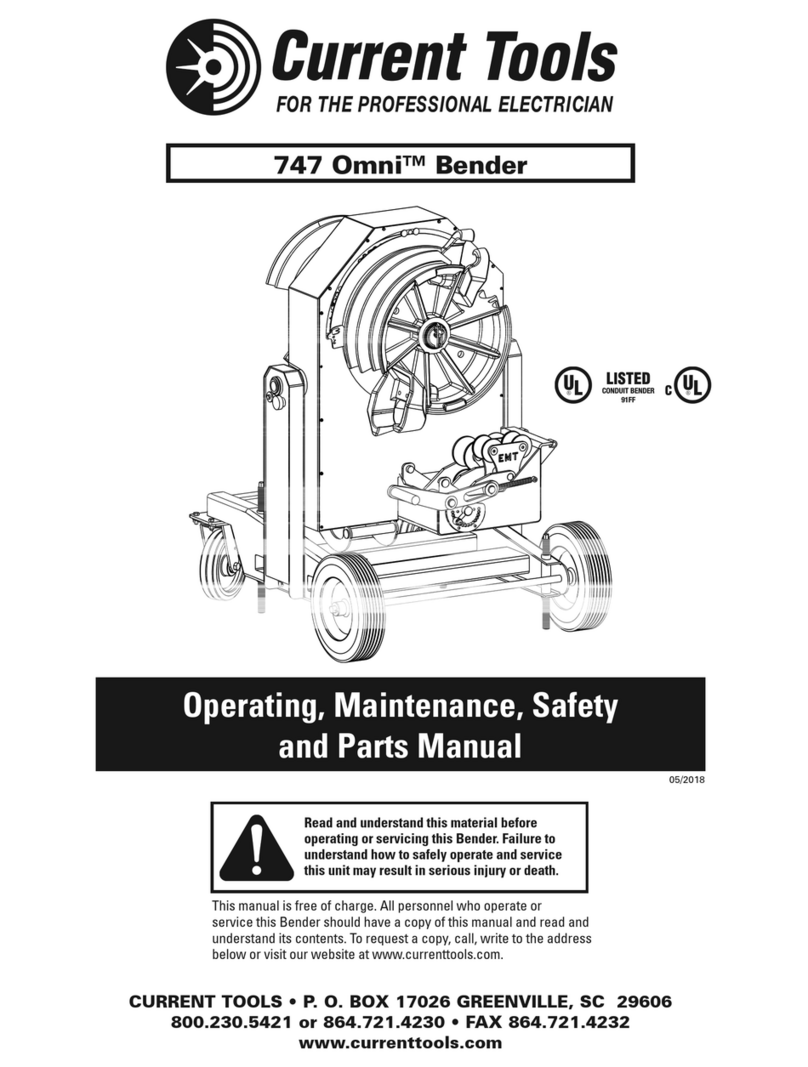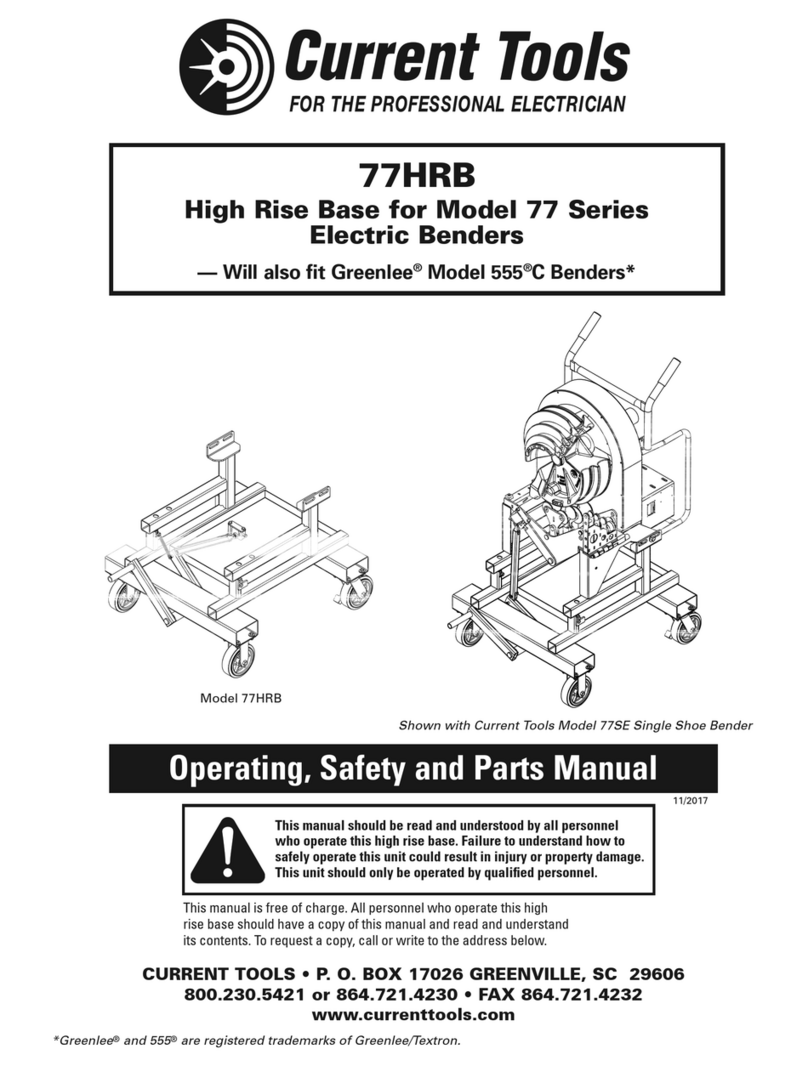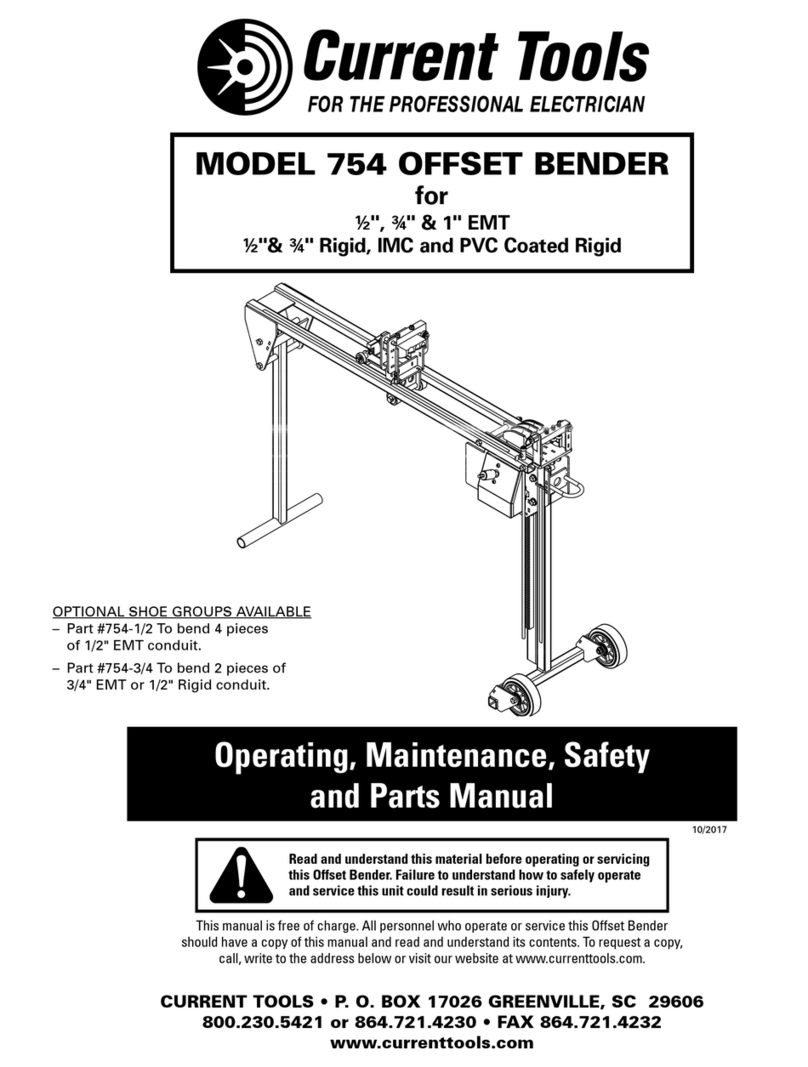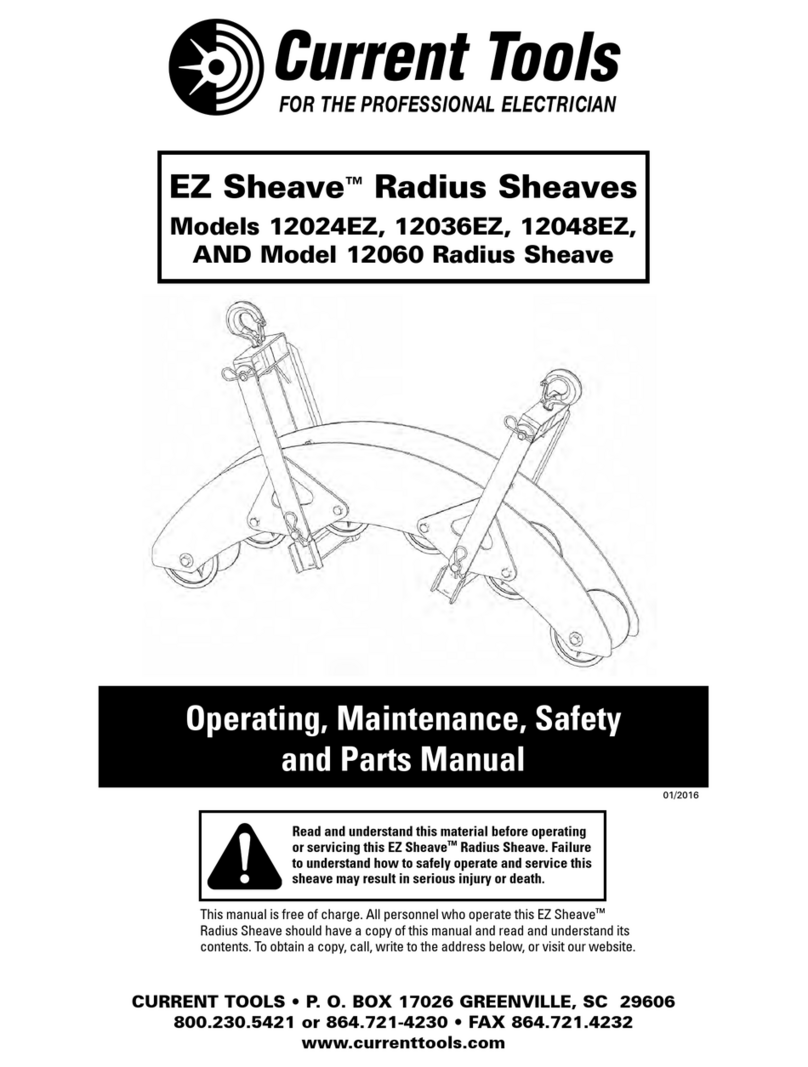
ALWAYS use recommended accessories. Consult this manual for
recommended accessories. The use of improper accessories may
cause risk of injury.
ALWAYS keep hands and feet away from pinch points such as
bending shoes, roller supports and conduit when bender is in use.
Operator must ALWAYS face the front of the bender with the
bending degree scale visible and maintain a minimum of 3 feet
distance from the bender while the conduit is being bent. All
other personnel must remain out of the area while the bender is
in operation.
ALWAYS use appropriate shoe groove and roller support for
the type and size conduit to be bent.
If bending shoe will not turn, STOP unit and unplug before
checking for any obstructions.
DO NOT use bender or attachments to do a job for which
it was not designed.
ALWAYS keep conduit under control when unloading.
ALWAYS keep the path of the bending conduit clear of
obstructions. Make sure all obstacles are clear of the bending
path BEFORE you bend the conduit.
Be sure handle is bolted securely to the bender frame before
moving or lifting the bender.
NEVER stand on bender. Serious injury could occur if the bender
is tipped or if the bending shoe is unintentionally contacted.
ALWAYS wear approved safety glasses when the bender is
in operation.
ALWAYS wear proper apparel. Do not wear loose clothing,
gloves, neckties, rings, bracelets, or other jewelry which may
get caught in moving parts. Non-slip footwear is recommended.
Wear protective hair covering to contain long hair.
ALWAYS keep children away. All visitors should be kept a safe
distance from work area.
ALWAYS make bender childproof with lockouts, master switches
or by unplugging unit.
The bender and some accessories exceed 50 lbs. and will
require more than one person to lift, transport and assemble.
Only use the bender for its intended purpose as specified
in this manual.
ALWAYS use this bender in a dry, well lighted area.
ALWAYS maintain bender with care. Keep bender clean for
best and safest performance.
5
IMPORTANT SAFETY INFORMATION — continued
WARNING
WARNING
WARNING
WARNING
WARNING
WARNING
WARNING
WARNING
WARNING
WARNING
WARNING
WARNING
CAUTION
CAUTION
CAUTION
CAUTION
WARNING
WARNING































